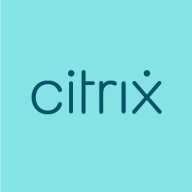

Citrix DaaS and Red Hat Enterprise Virtualization for Desktops are competitors in the desktop virtualization market. Citrix DaaS appears to have an edge with its advanced feature set and ease of deployment.
Features: Citrix DaaS provides comprehensive scalability, seamless cloud integration, and extensive security options. Red Hat Enterprise Virtualization for Desktops offers open-source flexibility, robust virtualization capabilities, and competitive pricing. Each platform provides unique benefits, but Citrix's enriched feature set is particularly attractive for large enterprises seeking advanced functionalities.
Ease of Deployment and Customer Service: Citrix DaaS is known for a streamlined deployment process and strong support network, which simplifies setup. Red Hat Enterprise Virtualization for Desktops typically requires intricate configurations and mostly relies on community-driven support, which can be less accessible.
Pricing and ROI: Citrix DaaS involves a larger initial investment but tends to deliver long-term value with its robust features and stability. Red Hat Enterprise Virtualization for Desktops offers a lower upfront pricing model that appeals to organizations aiming to reduce initial costs while still achieving satisfactory returns over time.
| Product | Market Share (%) |
|---|---|
| Citrix DaaS (formerly Citrix Virtual Apps and Desktops service) | 13.7% |
| Red Hat Enterprise Virtualization for Desktops | 0.8% |
| Other | 85.5% |


| Company Size | Count |
|---|---|
| Small Business | 43 |
| Midsize Enterprise | 21 |
| Large Enterprise | 68 |
Enable secure, flexible work with the leader in virtual apps and desktops
Deliver desktop as a service (DaaS) from any cloud or datacenter
Get started with Citrix DaaS (formerly Citrix Virtual Apps and Desktops service) in minutes to provide a familiar, high-performance digital workspace experience to your users. We’ll manage the infrastructure and security. You focus on your business.
We monitor all Virtual Desktop Infrastructure (VDI) reviews to prevent fraudulent reviews and keep review quality high. We do not post reviews by company employees or direct competitors. We validate each review for authenticity via cross-reference with LinkedIn, and personal follow-up with the reviewer when necessary.